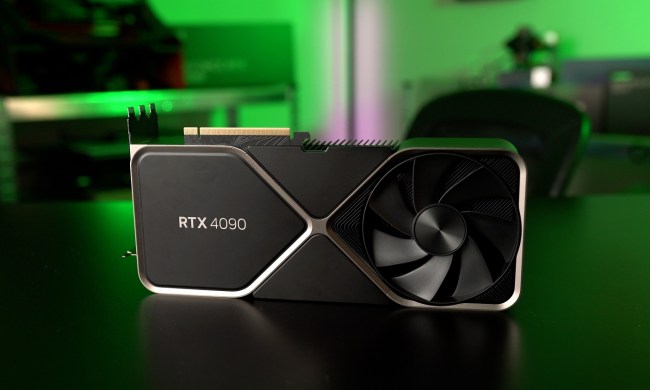AMD’s long-rumored “Nvidia Killer” graphics card may be on track to become the most powerful GPU ever released. A purported specifications list for the card has been leaked and seems to corroborate previous rumors about the Navi 21 GPU. More than that though, it suggests this card will have more memory bandwidth than most workstation cards, combining the fastest memory in the world with an enormous bus.
Following the launch of AMD’s RX 5700 XT GPU in 2019, AMD fans have been awaiting a high-end solution based on the same RDNA architecture. AMD has made statements to suggest it plans to be competitive throughout the entire GPU price/performance spectrum, with CEO Lisa Su promising a high-end RDNA GPU before the end of 2020. Other rumors in December suggested the Navi 21 GPU at the heart of this alleged “Nvidia Killer” card would be twice the physical size, and close to twice the performance of the 5700 XT.
While that is likely a bit of a stretch, even for a monstrous top-tier card, the specs that have appeared in this latest leak suggest it could still be a very capable card. Although unnamed, the “D32310/15” GPU configuration leaked in an SK Hynix document on Twitter (via WCCFTech) suggests the card will have 5,120 shader cores, with 80 Compute Units. That’s double the number found in the 5700 XT, and suggests AMD has finally broken through the 40 Compute Unit limit of its GCN architecture with the new RDNA 2 architecture.
Alongside its massive core count, this card will allegedly also utilize 24GB of enhanced, second-generation, high-bandwidth memory (HBM2e), which is faster and more efficient than the HBM2 found in cards like the Vega 56 and 64. When combined with a memory bus of 4,096-bit, this GPU has an alleged bandwidth of 2,048 GBps. That’s more than four times the bandwidth of the 5700 XT and over three times that of the Nvidia RTX 2080 Ti.
More telling, though, is that that’s twice that of the Radeon VII, which was a cut-down workstation GPU retooled for gaming. That might suggest that whatever this card is, it’s more targeted at enterprise solutions — there are certainly few, if any, games that could take advantage of so much memory right now. But that said, the RDNA architecture has proved to be extremely memory hungry, so it’s possible that a huge shader unit count could require heaps of extra memory to feed it through its high-speed operation.
We don’t have any word on clock speeds for core or memory, though typically higher core counts mean lower frequencies to compensate for higher power draw and temperature demands. That could open up some serious headroom for overclocking for those who are willing to stick a larger and capable cooling solution on this rumored GPU.
It would likely be very expensive though. HBM2e is not cheap, even if it is blazingly fast. If this does prove to be AMD’s flagship high-end GPU for its next-generation of RDNA graphics cards, a price close to $1,000 seems quite likely. But at that price and with these sorts of specifications, we could well be looking at a card that is faster than the RTX 2080 Ti by a sizeable margin.
With a next-generation of Nvidia Ampere GPUs expected this year, this new card may not have long to steal the performance crown, if it can. But if it did so, even briefly, it would be a return to form from AMD that we haven’t seen in several generations. It looks like the GPU space is going to become that bit more competitive at the top end in 2020.




